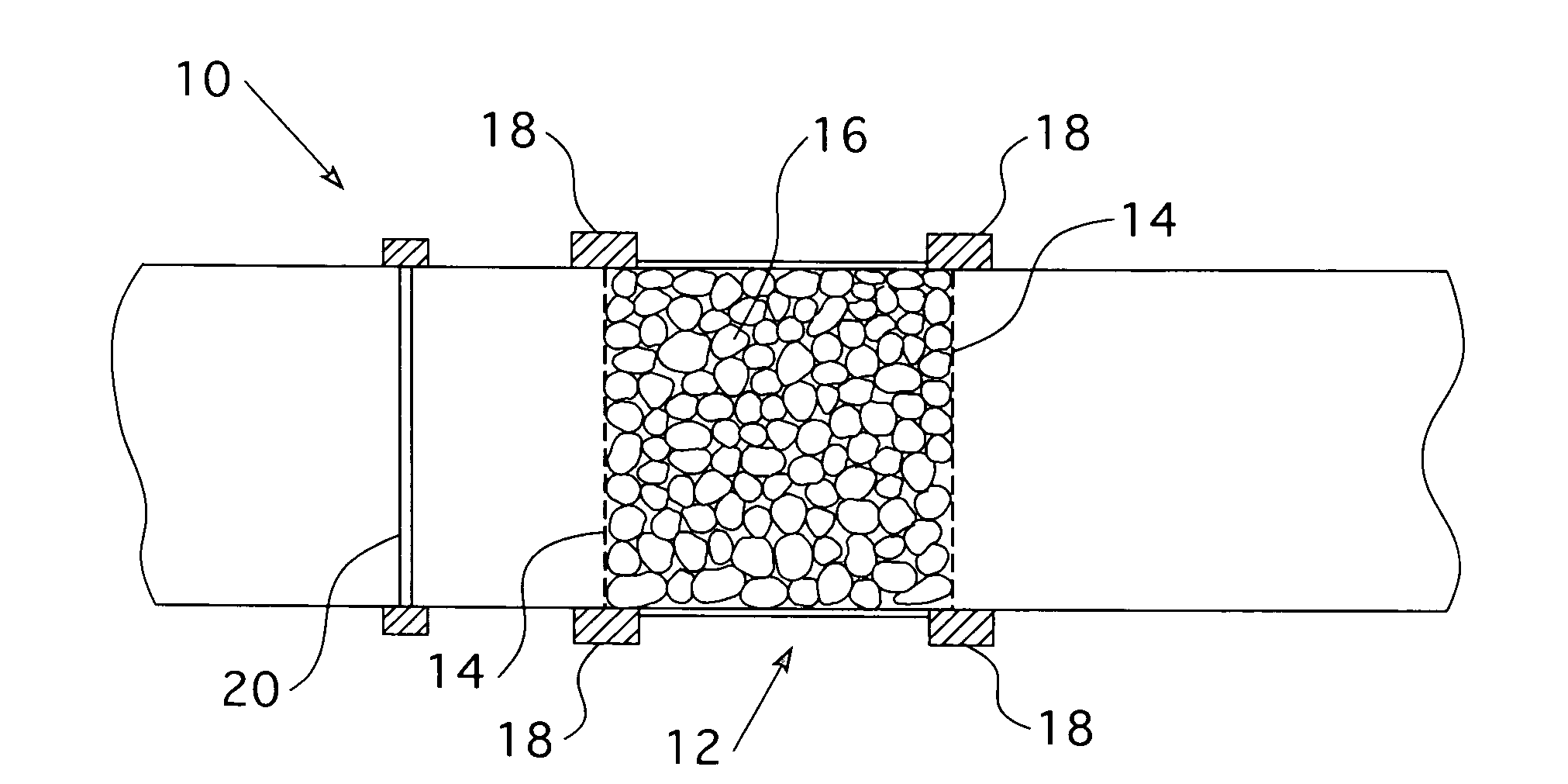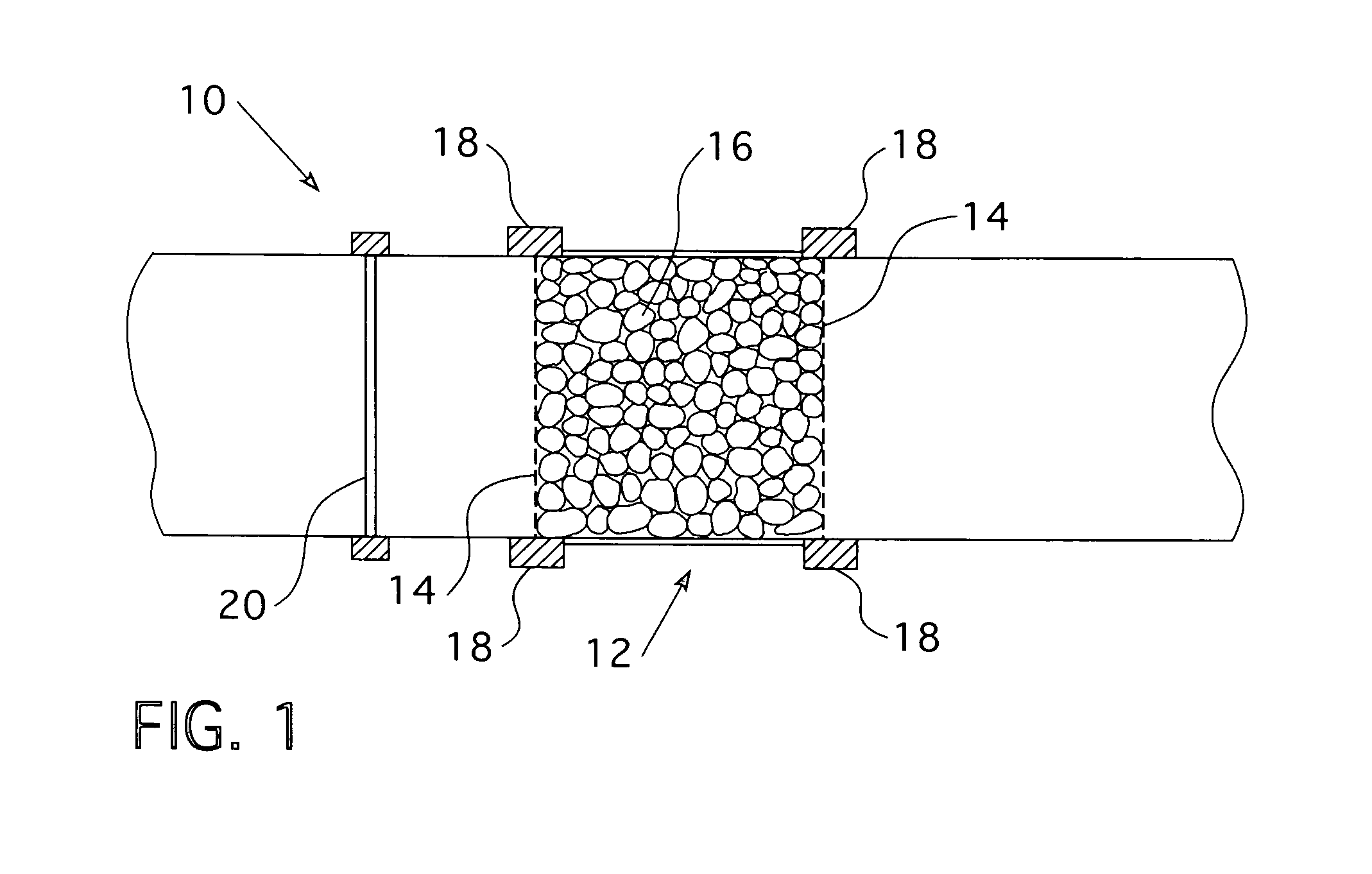Process for removing soluble and insoluble oxidation by-products from non-polar lubricating and hydraulic fluids
a technology of non-polar lubricating and hydraulic fluid, which is applied in the direction of ion-exchangers, separation processes, lubricant compositions, etc., can solve the problems of reducing the efficiency of the lubricant maintenance system, and reducing the lubricant life of the lubricant. , to achieve the effect of increasing the fluid performance and prolonging the lubricant li
- Summary
- Abstract
- Description
- Claims
- Application Information
AI Technical Summary
Benefits of technology
Problems solved by technology
Method used
Image
Examples
Embodiment Construction
)
[0009]The present invention is a method of inserting into a non-polar fluid flow a quantity of a solid medium, preferably a crosslinked polystyrene resin, which has the surprising effect of absorbing or adsorbing both soluble and insoluble oil oxidation by-products and other lubricant degradation products to extend the life of the lubricating oil. The solid medium can be any of virgin cotton, activated carbon, mineral with ion exchange capacity (Clinoptilolite, Fuller's Earth and Zeolite), polystyrene polymers such as crosslinked styrene-divinylbenzene polymers arrayed as strong or weak anionic or cationic ion exchange medium or without any ion exchange functionality at all, with any or all media types generally having a porous structure. When beads are used as the medium the beads range from no. 16 to no. 50 mesh. The solid media may take the form of porous beads, or integral plugs or any other form including a sheet material (such as a filter sheet material) which is both solid a...
PUM
| Property | Measurement | Unit |
|---|---|---|
| size | aaaaa | aaaaa |
| time | aaaaa | aaaaa |
| diameter | aaaaa | aaaaa |
Abstract
Description
Claims
Application Information
 Login to View More
Login to View More - R&D
- Intellectual Property
- Life Sciences
- Materials
- Tech Scout
- Unparalleled Data Quality
- Higher Quality Content
- 60% Fewer Hallucinations
Browse by: Latest US Patents, China's latest patents, Technical Efficacy Thesaurus, Application Domain, Technology Topic, Popular Technical Reports.
© 2025 PatSnap. All rights reserved.Legal|Privacy policy|Modern Slavery Act Transparency Statement|Sitemap|About US| Contact US: help@patsnap.com


